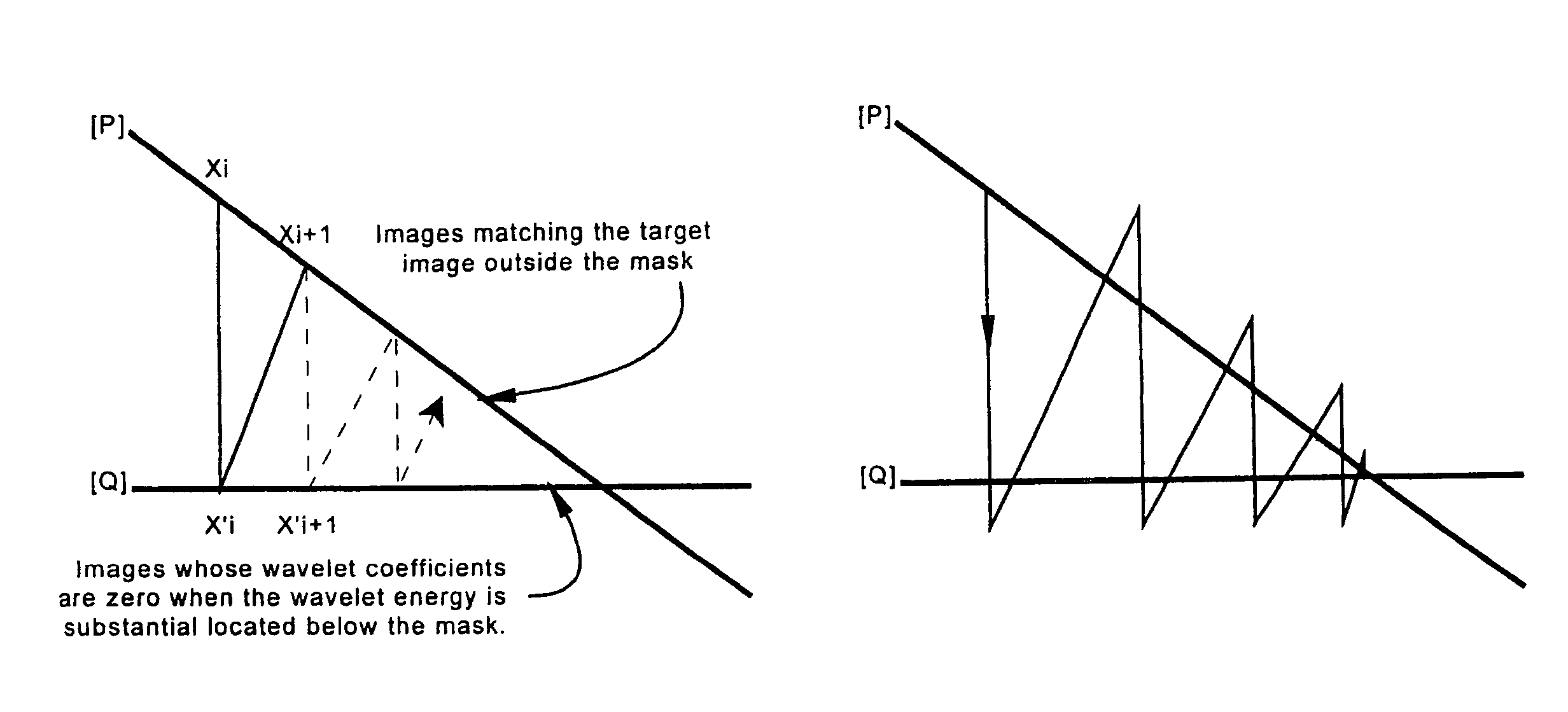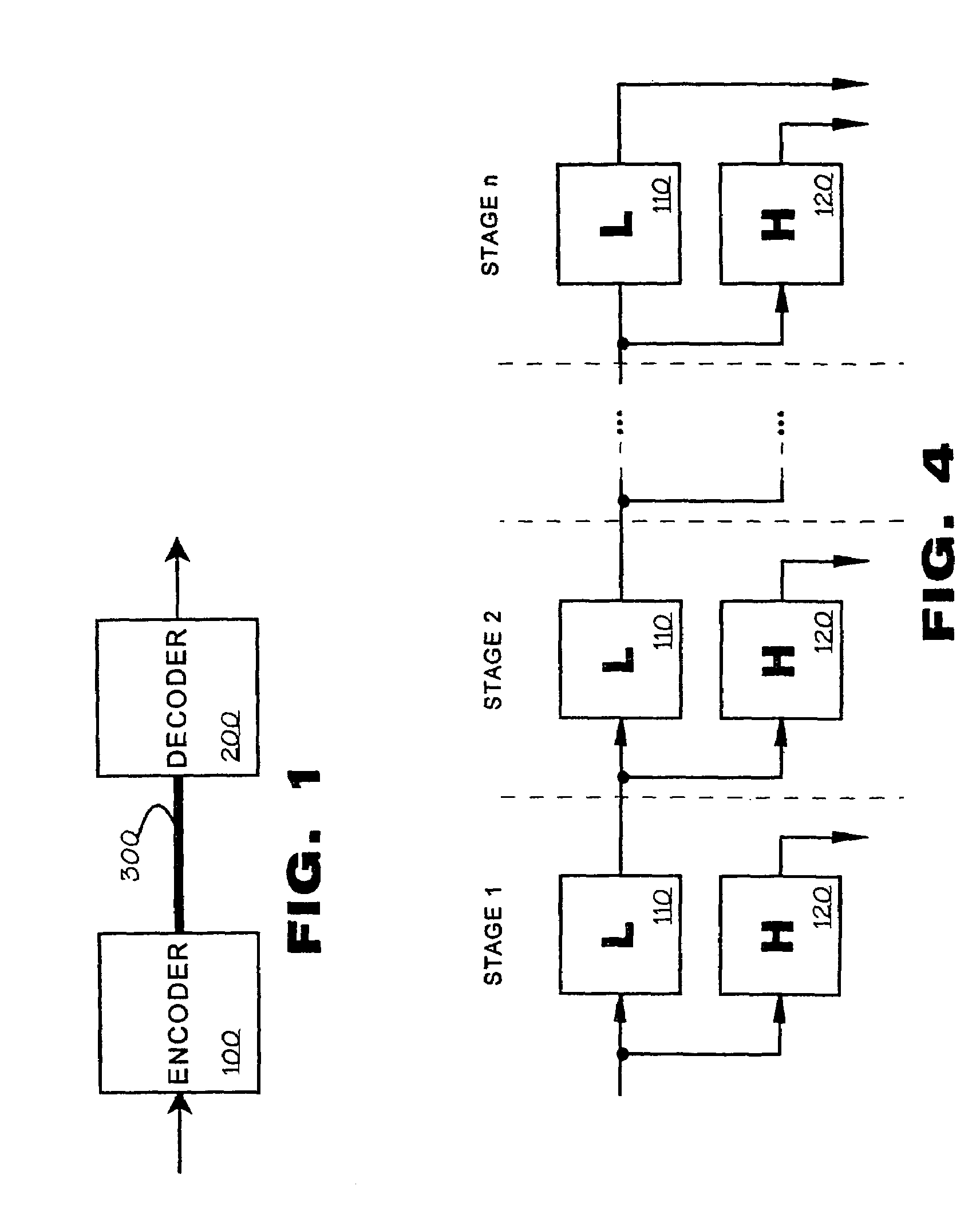Compression of partially-masked image data
a technology of image data and compression, applied in the field of fast and efficient method of coding partially-masked image information, can solve the problems of coding errors that are applied to masked image data that are not important, masks that disrupt the smoothness of image data, and inefficiencies in coding image data, etc., and achieve the effect of quick convergen
- Summary
- Abstract
- Description
- Claims
- Application Information
AI Technical Summary
Benefits of technology
Problems solved by technology
Method used
Image
Examples
Embodiment Construction
[0022]The present invention provides a coding technique adopted to code partially-masked image data with a minimum number of wavelet coefficients. It is called the “Successive Projections Algorithm.” The technique replaces masked pixels with a smooth interpolation of non-masked pixels to improve coding efficiencies.
[0023]The present invention also proposes two techniques to improve convergence of the success projections algorithm. The first technique, labeled the “Multi-Scale Successive Projections Method,” breaks the wavelet decomposition stage of encoding into several stages. In the first stage, wavelet encoding is performed on the smallest wavelets. In each stage thereafter, successively larger wavelets are encoded. Quick convergence is obtained because the smaller wavelets are likely to possess significant energy below the mask. They are identified in the early stages. In the latter stages, many fewer iterations of image reconstruction and coefficient recalculation are needed be...
PUM
 Login to View More
Login to View More Abstract
Description
Claims
Application Information
 Login to View More
Login to View More - R&D
- Intellectual Property
- Life Sciences
- Materials
- Tech Scout
- Unparalleled Data Quality
- Higher Quality Content
- 60% Fewer Hallucinations
Browse by: Latest US Patents, China's latest patents, Technical Efficacy Thesaurus, Application Domain, Technology Topic, Popular Technical Reports.
© 2025 PatSnap. All rights reserved.Legal|Privacy policy|Modern Slavery Act Transparency Statement|Sitemap|About US| Contact US: help@patsnap.com



